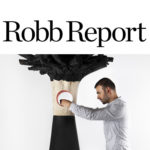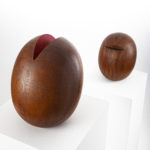Kültür Sanat Haritası
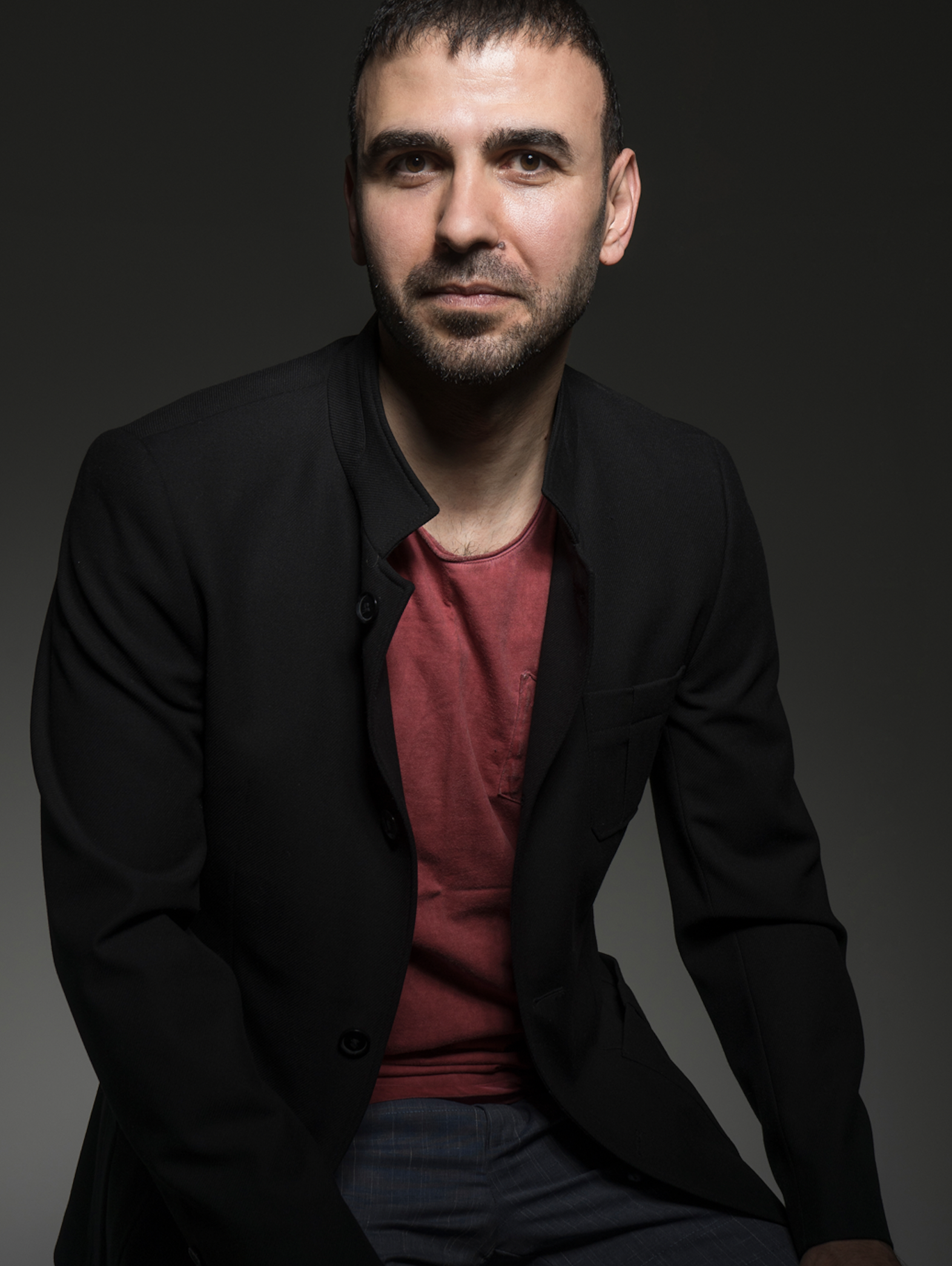
Ahmet Yiğider; ‘Sculpture, depth, form, balance, posture... are things I feel free enough to knock my feet off the ground whilst doing something with them.’ ...
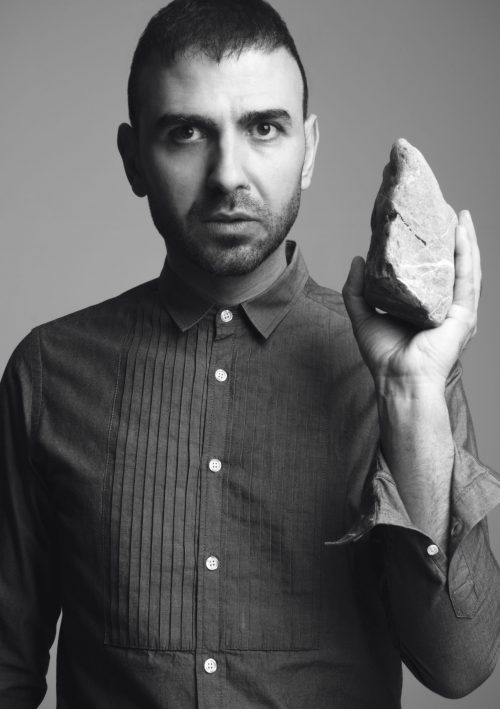
Ahmet Yiğider is an interdisciplinary artist. He makes sculptures using dead tree fragments and industrially grown trees. We recently sat down with him and had a multifaceted, enjoyable interview about his solo exhibition ‘Intellect’ at the Moscow Gallery Fine Art to the sensory experience at the Baksı Museum.
What does the word “sculpture” mean to you? Where does sculpture fit into your own life? How do you define your style?
It’s a bit about what art form the artist focuses on and where he feels free. Sculpture, depth, form, balance, posture… all these things I feel free enough to knock my feet off the ground whilst doing something with them. Sculpture is an area where engineering gains new meaning in terms of the material and technical process. Sculpture has such a special place in my heart, true. That said, every technique that allows me to express my idea of art creates a space and meaning for me. As you know, I’ve also done projects centred around the human senses – namely smell.
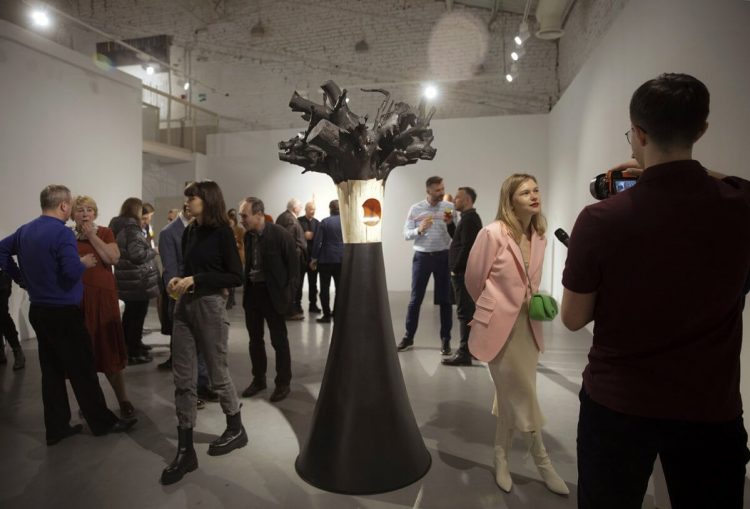
Let’s talk about your Baksı Kokusu project for a moment. What was working on that like?
Baksı Kokusu is a project I put together for Baksı Museum in back in 2016… If you pause and think about the story behind the museum and its founder Mr Hüsamettin Koçan… the project therefore is a kind of sensory experience and conceptual approach promised through smell. I created an installation that semantically deals with such concepts as expatriate, backward, geography and movement, and then defined them with scents. The result ended up attracting a lot of positive attention – namely because I used scent as an art medium and means of expression. Spectators simply loved it! We also had the opportunity to re-present it under the title ‘Where Art and Smell Intersect’ a travelling innovation summit held at many universities across Turkey as well as in Dubai.
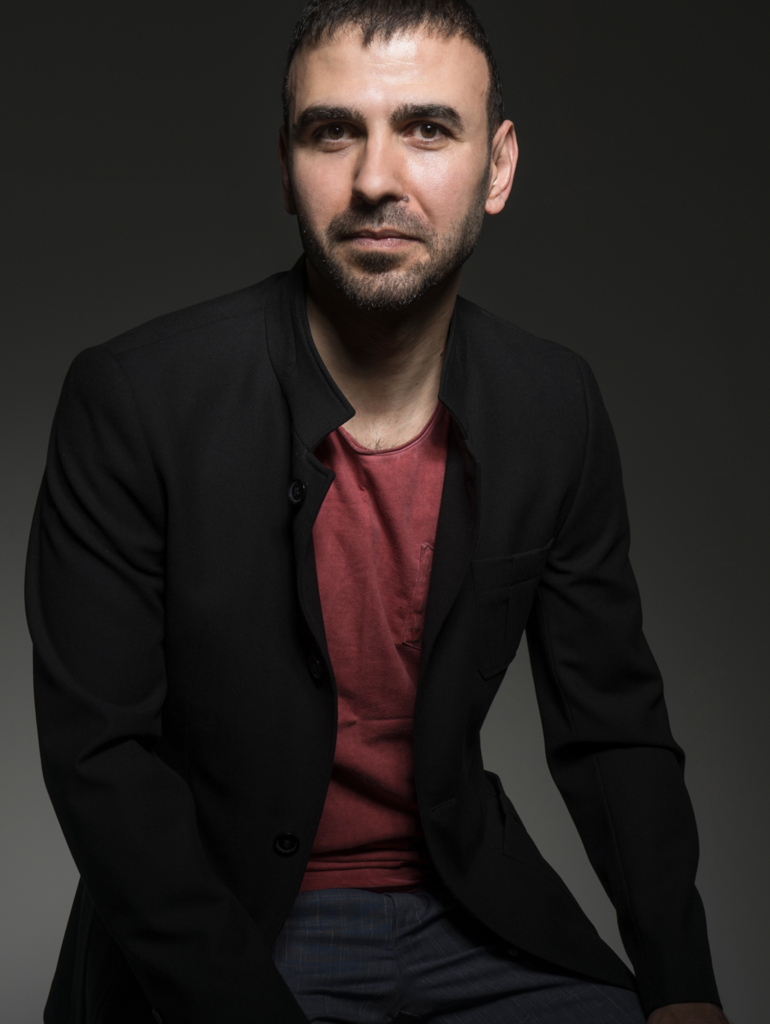
We know that wood and metal play an essential role in your work. Valeria Kotiukh describes your pieces as “ bold and exciting, and that bring together multiple areas…” You mainly use dead wood and industrially grown trees. Why?
I adore how wood is not homogeneous or stable, and that it welcomes you with an original surface and character of its own. I go namely for dead or environmentally sensitive trees grown for industrial purposes… I want to talk about a feeling I think every artist ought to experience at one point or another. Sometimes, you find yourself working on a project that excites you so much that you sacrifice everything to produce it because you believe in it. Nevertheless, in the heat of the moment, we should not sacrifice something that belongs to nature or humanity that we have no right to use as a material.
I want to make another point regarding my material preference. My “Intellect” and “Detractive Anatomies” sculpture series were shaped by wood material based on their characters. I enjoy using metal, composite materials, and wood in my sculptures. I currently am working on a line of several stone-heavy sculptures.
You tend to explore the impact that technology has on people’s lives, alongside ecological problems, and the evolution of civilisation… What message do you want to convey through your work?
One thing has been central to my awareness ever since I was a kid: Infinity surrounds man. It doesn’t matter whether you nature, universe, or something else… Existence starts with our curiosity about that eternit and the shell between you and it, and continues with our effort to try and make sense of it. Here, science is the essential tool. While I was full of art, that understanding seems to have influenced my interest in nature, science, and ultimately engineering. I think that if – or the moment – a person loses her/his sense of curiosity and the urge to explore, she/he will cease to exist in art and any other creative field for that matter.
What factors feed you when you design and create art?
Three phenomena look at and feed us in art and even all aspects of existence: Man, nature, and the universe. The first lies at a depth that we can only understand by turning inward… The other two give clues the second we shed ourselves of our burdens and (opt to) seek a free infinity.
Moving on to your exhibition “Intellect” in Moscow…. What’s the story behind that?
With pleasure… We’ve all heard at one point or another that time and man’s progress towards nature or – to use a little more clichéd phrase – ‘modernisation’ have corrupt humanity. It seems that discourses that started out as ‘time people’ have existed since Aristotle. Therefore, this basic discourse is not my position. However, what makes me think a lot is that humanity has made significant progress in terms of cumulative knowledge, its dominance over nature, and how it perceives the universe – especially in over past few centuries. Still, this as revealed a collapse in the opposite direction in universal human issues, where one ought to expect parallel or even more development!
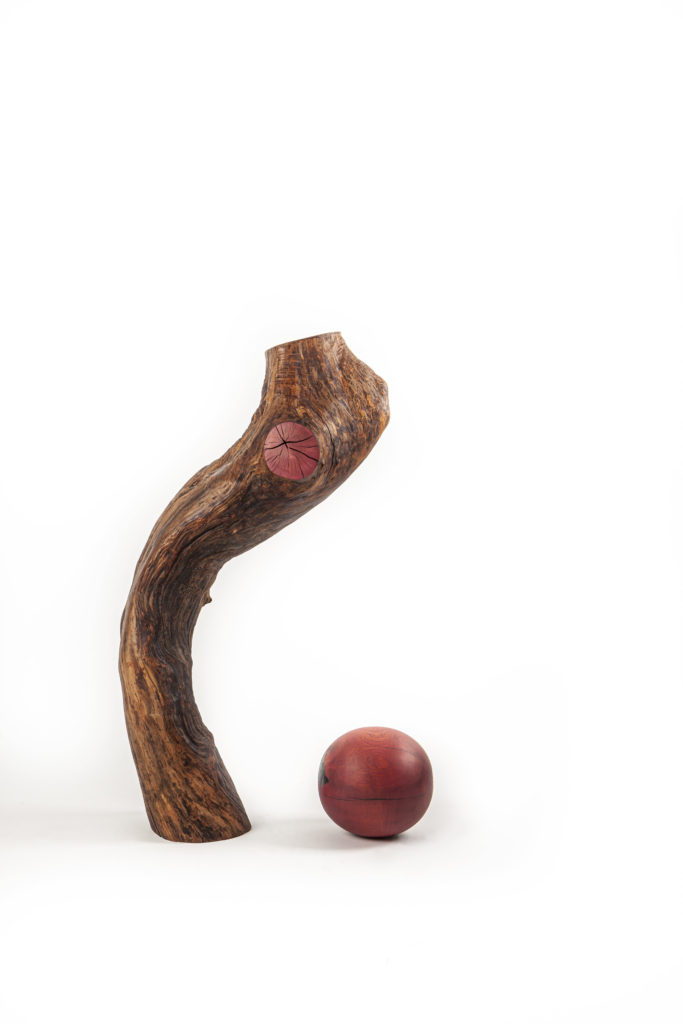
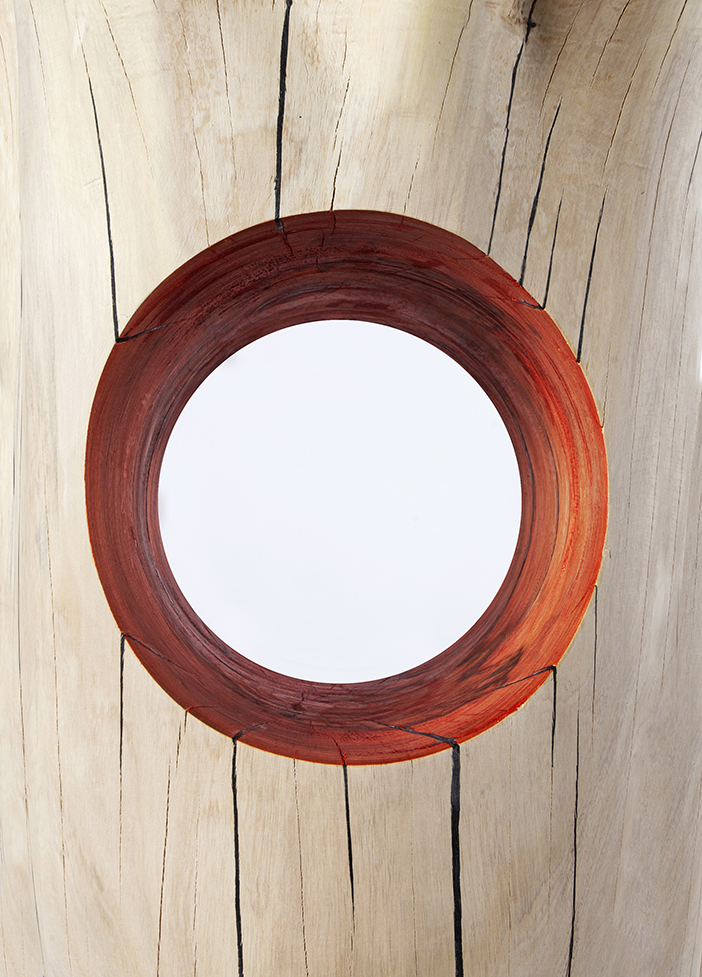
I read this as an anomaly of human thought. That, in turned, paved the way for my ‘Intellect’ sculpture series. ‘Detractive Anatomies,’ on the other hand, in the project’s second phase. It began with me searching for a way to fuse the effort and anatomy of man into existence, and boil that down into a single conceptual and formal language. Unlike abstraction or mere leaning, the project expresses my desire to purify anatomical lines from many of the primary and general distinguishing elements. I wanted to reach the lowest point of their existence, and look for new images that bless the limbs of seeing and thinking in the hostile areas that emerge therefrom.
Moscow is a bastion of culture, art and architecture. It has its own aura and a very strong spirit. Likewise, The Gallery Fine Art is a highly respected and prestigious art institution, and has been so since day one. It hosts over 100 artists known for their historical and artistic stance, as well as some of the best examples Russian contemporary art. As you’d probably guess, I was very excited when “Intellect” was invited to the Moscow Gallery Fine Art – and during a pandemic at that. I.e. a time when the country’s borders are clear and global interaction is severely restricted. I’d faced a number logistics issues upon the delivering the sculptures to Moscow in the past. The ordeal of cataloguing everything was also a bit arduous. The headache of both quickly went way when we began receiving positive feedback from people.
As an artist, how do the concerns about the values and expectations people place on your art affect you?
That’s a difficult question… I don’t think I can really answer you properly. No tool exists for to help us see the value of art as a measure on its ruler. Take art history for example…. we see that the academic value of the artist and his work, or the value it adds to art history and the material value at that moment, are all fundamentally different from one another. The artist can get stuck between the free art space to realise his vision, and the concern of ‘ether’ to secure financial stability… If the artist does not have a material source to dig them out of that jam, then they need to come up with a balanced strategy for themselves that’ll help them determine the meaning of their artistic life.
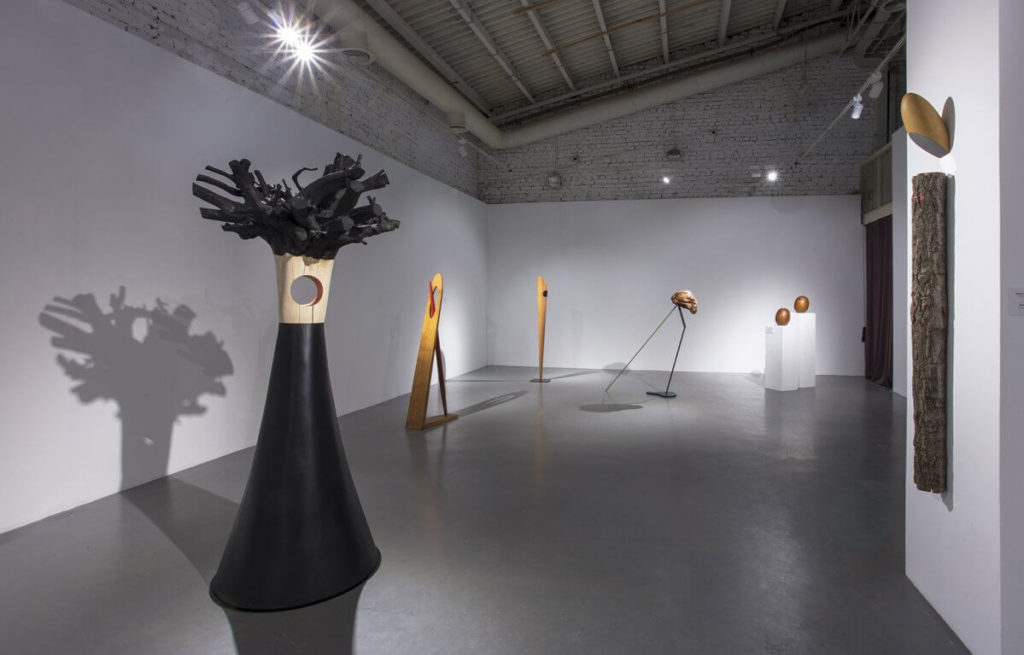
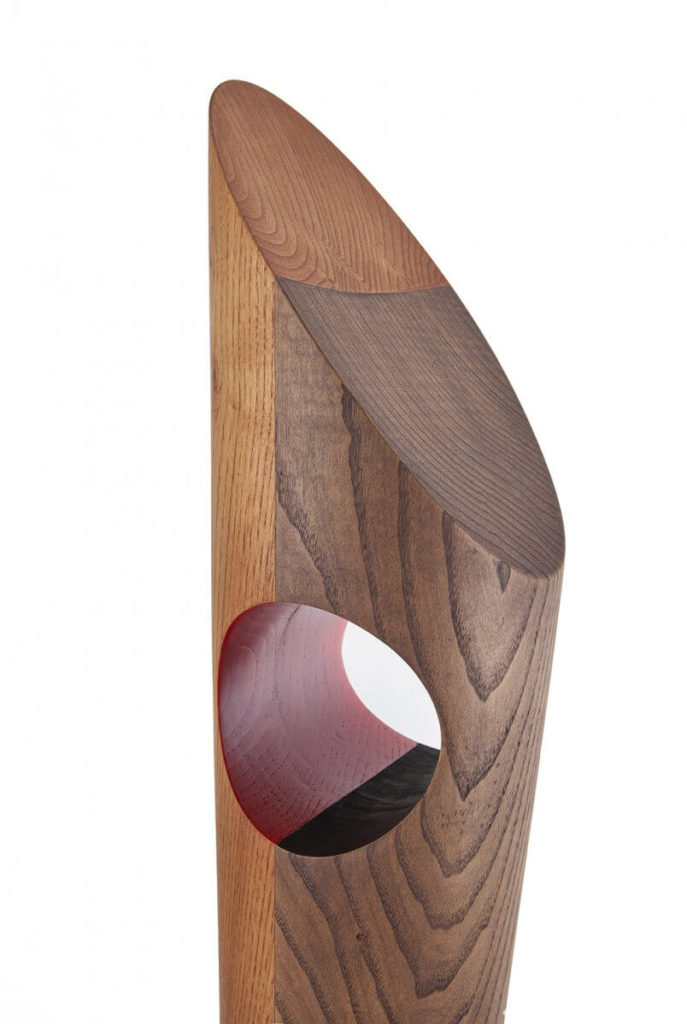
You’re also a curator for the Seluz Contemporary Gallery, right?
I’ve been on the executive board of a fragrance and flavor development company called Seluz for about seven years now. I oversee all the creative processes that go on there. Seluz is a creative industry in its own right as we work in two niche fields: scent and taste. We trace creativity in all our processes. To better understand Seluz, you need to take a walk through the giant indoor forest inside its Research and Development Centre first.
Five years ago, with our founder Mr. Murat Öztürk, we decided to include art more in our creative world and launched the first permanent collection exhibition: Seluz Contemporary. I curated a project called Massence for it that includes of 29 artists from 15 countries. Over the three a half years it took to put together, we had the opportunity to cooperate and develop projects with artists and art institutions from many countries beyond Turkey.
I have combined the English words ‘mass’ and ‘essence’ to create ‘Massence’. Mass refers to all our external boundaries with a stylised approach, while essence refers to the human mind and the limitlessness of the imagination. Essence representation aims to lead us to the vitality that surrounds us, nature and, the smallest building blocks of life and matter… it also takes us to the depths of thought and consciousness, and internal questioning.
What direction do you think art is taking in Turkey?
Currently everything in Turkey – science, art, creativity, productivity, academia, and the education – is going south. We shouldn’t handle this issue lightly either, as though it were some cake ornament. Unfortunately, I fear that our breaking away from and resisting merit, science and art will lead to our collapse as a nation!
Have you got any new projects up your sleeve?
Yes: two projects of them deal with the sense and smell. I’m so far having lots of fun. I hope to implement both here in Turkey. I’m also working interdisciplinary project that I started during the pandemic. It’ll feature sculpture alongside two-dimensional and digital pieces. Like “Intellect,” we plan to exhibit it outside of Turkey.
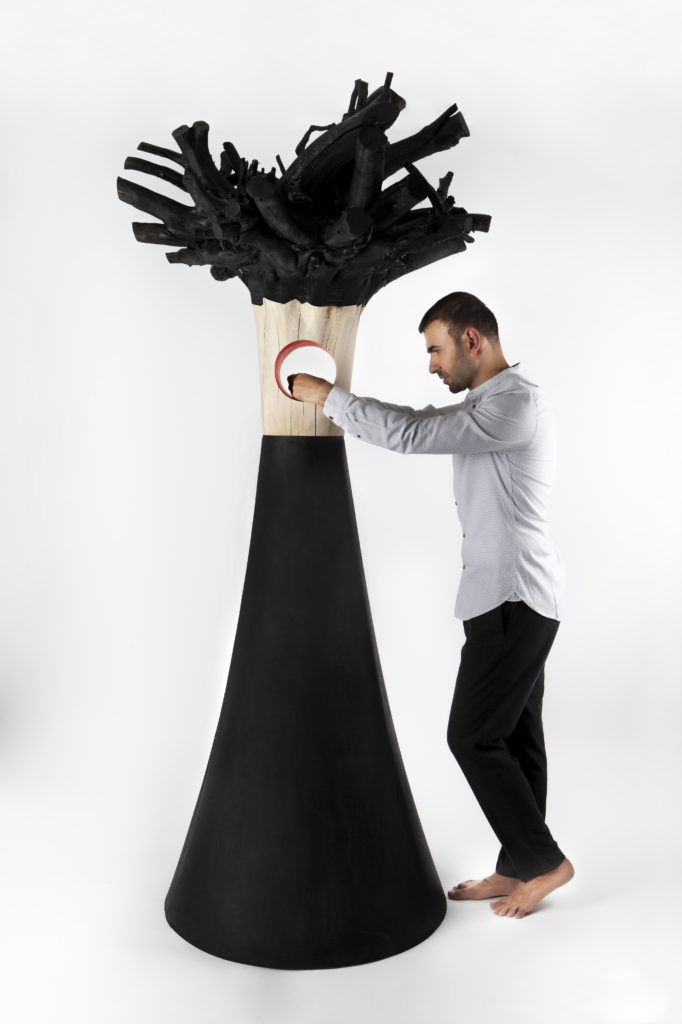
Gülistan Ertik
Ahmet Yiğider;”heykel, derinlik, biçim, denge, postura… bunların hepsi üzerinde çalışırken ayaklarımı yerden kesecek kadar özgürlüğü hissettiğim şeyler.”…

Ahmet Yiğider, disiplinlerarası bir sanatçı. Ölü ağaç parçaları ve endüstriyel olarak üretilen ağaçları kullanarak heykeller yapıyor. Rusya’nın en saygın çağdaş sanat galerinden Moskova Gallery Fine Art’ta açtığı kişisel sergisi ”Intellect – Kafa” dan, Baksı Müzesi’ndeki duyusal deneyime kadar çok yönlü keyifli bir söyleşi gerçekleştirdik.
Heykel sizin için ne ifade ediyor? Heykeli kendi yaşamınızın içinde nasıl bir yere yerleştiriyorsunuz? Tarzınızı nasıl tanımlıyorsunuz?
Öyle sanıyorum ki sanatçının hangi sanat biçimi üzerine eğildiği biraz da kendini nerede özgür hissettiği ile alakalı. Heykel, derinlik, biçim, denge, postura… bunların hepsi üzerinde çalışırken ayaklarımı yerden kesecek kadar özgürlüğü hissettiğim şeyler. Heykel başka bir noktada ise mühendislik bakışının malzeme ve teknik süreç anlamında çokça anlam kazandığı bir alan. Heykelin böyle özel bir yeri olsa da diğer yandan sanat düşüncemi ifade etmemi sağlayacak her teknik benim için bir alan ve anlam oluşturuyor. Hatta sizin de bildiğiniz gibi geçmişte duyularımızı ve kokuyu merkeze alan çalışmalarım oldu.

Evet, tam da bu noktada Baksı Kokusu projenize değinebilir miyiz? Bu projedeki deneyimleri paylaşır mısınız?
Baksı Kokusu; 2016 yılında Baksı Müzesi için yaptığım bir proje…Baksı Müzesi’nin ve kurucusu Sn. Hüsamettin Koçan’ın benzersiz hikayesini merkeze alarak koku üzerinden vaat edilen duyusal bir deneyim ve kavramsal bir yaklaşım olarak tanımlayabiliriz. Gurbet, geriye dönüş, ait olunan coğrafya ve devinim gibi kavramları semantik bir yaklaşımla ele alan ve kokularla tanımlayan bir enstalasyon kurgusu oluşturdum. Bu proje her şeyden önce kokuyu bir sanat malzemesi ve diğer yandan ifade aracı olarak kullanma açısından dikkat çekti. Ziyaretçilerin enstalasyon kurgusunu deneyimlemesi noktasında aldığımız olumlu tepkiler dışında, Türkiye’de birçok üniversitede ve ayrıca Dubai’de gerçekleşen bir inovasyon zirvesinde “Sanat ve Kokunun Kesişme Alanı” başlığı altında sunma imkanı bulduk.

Ağacın ve metalin, sizin çalışmalarınızda önemli yerlere sahip olduklarını biliyoruz. Editör Valeria Kotiukh sizin için ”eserlerinizde birden fazla alanı buluşturmanızın cesur ve ilginç bulunabilecek bir durum” olduğunu söylüyor…Özellikle ölü ağaç parçaları ve endüstriyel olarak üretilen ağaçları kullanıyorsunuz. Bu malzemelerle çalışmayı nasıl seçtiniz?
Ağaç ve ahşap malzemenin homojen ve stabil olmaması, üzerinde yaptığınız her işlemde özgün bir yüzey ve karakterle sizi karşılaması beni her zaman heyecanlandırıyor. Sadece ölü ağaçlar veya endüstriyel amaçla üretilmiş çevreye duyarlı ağaçlar kullanmam bir tercih tabi ki…Her sanatçının muhakkak yaşadığını düşündüğüm bir duygudan bahsetmek isterim. Bazen üzerinde düşündüğünüz eser sizi o kadar heyecanlandırır ki o eseri üretmek için birçok şeyi gözden çıkarırsınız. Ama böyle büyük bir heyecan içinde olduğumuz an bile, tabiata veya insanlığa ait ve bizim hiç de hakkımız olmayan bir parçayı, malzeme olarak feda etmemeliyiz diye düşünüyorum.
Malzeme tercihimle ilgili olarak başka bir noktaya da değinmek istiyorum. Intellect ve Detraktif Anatomiler heykel serileri biraz da kendi karakterleri ve gelişimleri itibariyle ahşap malzeme üzerinden şekillendiler. Heykel çalışmalarımda ahşap kadar metal ve hatta kompozit malzeme kullanımından da keyif alıyorum. Şu anda devam eden projelerimden bir tanesi, taş ağırlıklı birkaç heykelden oluşuyor.
Teknolojik ilerlemenin insan yaşamı üzerinde etkisi ve ekolojik sorunlar, uygarlaşma süreçleri genel olarak işlediğiniz konular…. Çalışmalarınızla vermek istediğiniz mesaj nedir?
Çocukluğumdan beri farkındalığımın merkezini oluşturan şey şuydu: İnsanı çevreleyen bir sonsuzluk var. İster tabiat deyin, isterseniz evren. Varoluş aslında bu sonsuzluğu ve bu sonsuzlukla aranızdaki kabuğu merak etmekle başlayıp, anlama ve anlamlandırma çabası ile devam ediyor. Ve burada da bilim en önemli araç. İçim sanatla dopdoluyken diğer yandan doğaya ve bilime bu derece ilgimin olması ve sonrasında mühendisliğe yönelmemde belki de bunun rolü oldu. Formasyonuna girdiği alan veya alanlar ne olursa olsun, ”bir insan merakını ve keşfetme dürtüsünü kaybederse, sanatta ve hiçbir yaratıcı alanda var olamayacaktır” diye düşünüyorum.
Eserlerinizin tasarım ve yaratım süreçlerinde sizi besleyen faktörler nelerdir?
Sanıyorum sanat ve hatta tüm varoluş deneyimlerinde bize bakan, bizi besleyen üç olgu var: İnsan, tabiat ve evren. Birincisi ancak içe dönerek anlayabileceğimiz bir derinlikte…Diğer ikisi ise tüm yüklerimizden kurtulup özgür bir sonsuzluk arayışına girdiğimizde bize ipuçları verebilir..
Moskova’daki Intellect – Kafa serginizden bahsedecek olursak, serginin hikayesinden biraz bahsedebilir misiniz?
Memnuniyetle… Zamanın, insanın doğa karşısında ilerlemesinin veya yakın tarihi baz alarak biraz daha klişe bir ifade kullanacak olursak “modernleşmenin” insanı yozlaştırdığına dair serzenişleri çokça duyuyoruz. Öyle görünüyor ki “zamane insanı” diye başlayan söylemler Aristotales’ten beri var olmuş. Dolayısı ile bu temel söylem benim konum değil. Ancak beni fazlasıyla düşündüren şey insanlığın özellikle son birkaç yüzyılda; kümülatif bilgisi, doğa üstündeki hakimiyeti ve evreni algılayışında önemli ilerleme sağlamasına rağmen, buna paralel ölçüde hatta belki daha fazla gelişme bekleyeceğimiz evrensel insani konularda tam tersi yönde bir çöküş ortaya koymasıdır.


Ben bunu düşünceye, insan düşüncesine dair bir anomali olarak okudum. “Intellect” serisi heykellerimin yolunu da bu açtı. Projenin ikinci evresindeki “Detraktif Anatomiler (Detractive Anatomies)” diye tanımladığım “indirgenmiş” anatomi serisi ise insanın var olma çabasını ve anatomisini tek bir kavramsal ve biçimsel dilde kaynaştırma arayışından yola çıkıyor. Soyutlama veya salt yalınlaştırma yaklaşımından farklı olarak anatomik çizgileri temel ve genel geçer ayırıcı unsurların birçoğundan arındırma, var oluşunun en dip noktasına ulaşma, bu nokta üzerinden yaratılan negatif alanlarda görme ve düşünme uzuvlarını kutsayan yeni imgeleri arama arzusunu ifade ediyor.
Moskova; kültür, sanat ve mimari gibi birçok alanda dünyanın en köklü şehirlerinden birisi. Şehir özgün bir aura ve güçlü bir ruh barındırıyor. Gallery Fine Art ise hem tarihi ve sanatsal duruşu hem de kuruluşundan bugüne kadar temsil etmekte olduğu Rus çağdaş sanatı açısından çok önemli 100’ün üzerinde sanatçı ile oldukça saygın ve prestijli bir sanat kurumu. Bu nedenlerle Intellect projesi Gallery Fine Art Moskova’dan sergi daveti aldığında güzel bir heyecan duydum. Bunun ülke sınırlarını daha da belirginleştiren ve küresel etkileşimi ciddi anlamda olumsuz yönde etkileyen bir pandemi döneminde olması daha da ilgi çekici bulunuyor. Geçtiğimiz birkaç ay içinde heykellerin Moskova’ya ulaştırılmasındaki lojistik konular ve projenin kataloglaması süreçleri biraz yorucu olsa da, sergi açılışından sonra aldığımız güzel tepkiler yorgunluğumuzu unutturdu.
Sanat emekçisi olarak sizi, sanatınıza verilen değer ve beklentilerden oluşan kaygılar nasıl etkiliyor?
Zor bir soru… Sadece kendi adıma cevaplayarak işin içinden çıkamayabilirim. Sanat eserinin üzerine tutarak sanat değerini cetvelinde ölçü olarak görebileceğimiz bir alet hiç olmadı. Sanat tarihine baktığımızda ise sanatçının ve eserinin akademik değeri veya sanat tarihine kattığı değer ile o anda biçilen maddi değerin büyük ölçüde paralel olmadığını görüyoruz. Sanatçı bir tarafta kendi vizyonunu gerçekleştireceği özgür sanat alanı ve diğer tarafta maddi anlamda sürdürülebilirliğini sağlayacak “eder” kaygısı arasında sıkışabiliyor… Eğer sanatçı onu bu sıkışmanın dışında tutacak bir maddi kaynağa sahip değilse bence yapması gereken tüm sanat hayatının da anlamını belirleyecek olan bir denge stratejisi olabilir.


Bir de yeni kurulan bir Sanat Galerisi var. Seluz Contemporary Galerisi. Bu galerinin aynı zamanda küratörlüğünü de yapıyorsunuz…
Yaklaşık 7 yıldır Seluz isimli koku ve tat geliştirme şirketinin icra kurulunda yer alıyorum ve yaratıcı süreçlerin yönetim sorumluluğunu üstleniyorum. Seluz, yaptığı iş itibariyle yaratıcı endüstri tanımına giriyor. Diğer taraftan da koku ve tat gibi oldukça duyusal ve niş bir alanda iş geliştiriyoruz. Bu nedenle tüm süreçlerimizde yaratıcılığın izini sürdüğümüzü söyleyebilirim. Seluz’u daha iyi anlayabilmek için Araştırma ve Geliştirme Merkezi’nin içinde, kapalı alanda yer alan dev ormanı göz önüne getirmeniz bile yeterli olacaktır.
5 yıl önce kurucumuz Sn. Murat Öztürk ile sanatı yaratıcı dünyamıza daha çok dahil etme kararı aldık ve Seluz Contemporary adıyla oluşturduğumuz yapıda ilk kalıcı koleksiyon sergisi olarak bir proje başlattık. Küratörlüğünü yaptığım Massence projesinde 15 ülkeden 29 sanatçının eserleri yer alıyor. Yaklaşık 3,5 yıl süren küratoryal süreçte dünyanın birçok ülkesinden sanatçı ve sanat kurumlarıyla işbirliği yapma ve proje geliştirme fırsatımız oldu.
“Massence”; “mass” yani kütle ve “essence” yani öz kavramlarını birleştirerek ürettiğim bir sözcük. Projede ele alınan kütle temsili, stilize bir yaklaşımla tüm dış sınırlarımıza ve insan aklının ve hatta tahayyülünün tam anlamıyla dokunamadığı artı sonsuza referans ederken; öz temsili, bizi kuşatan canlılığa, doğaya, canlılığın ve maddenin en küçük yapı taşlarına, aynı zamanda düşüncenin ve bilincin derinliklerine ve yer yer içsel bir sorguya götürmeyi hedefliyor.
Sizce Türkiye’de sanat nereye gidiyor?
En başta akademide ve hatta tüm eğitim sistemindeki liyakat sorunları nedeniyle bilim, sanat, yaratıcılık ve üretkenlik maalesef çok iyi bir yere gitmiyor. Bu konuyu pastanın süsü gibi ele alamayacağımız çok açık. Ben liyakat, bilim ve sanattan kopuşun ve hatta bunlara karşı ayak diremenin bir milleti çöküşe götüreceği kaygısındayım. Maalesef.
Yakın gelecekteki projeleriniz neler?
Merkezinde duyu ve koku olan ve oldukça heyecanla çalıştığım iki proje var şu anda. Bu iki projeyi de Türkiye’de hayata geçirmek istiyorum. Diğer yandan pandemi sürecinde başladığım ve disiplinler arası tanımını kullanabileceğim bir projemin çalışmalarına devam ediyorum. Bu projede heykelin yanında iki boyutlu işler ve dijital çalışmalar da yer alıyor. Intellect gibi bu projenin de Türkiye dışında sergilenmesini planlıyoruz.

